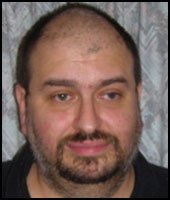
University of Leeds (1984)
Bachelors of Science – Genetics & Zoology
University of Cambridge (1991)
Ph.D. – Zoology
Nature, the international weekly journal of science (1987-)
Senior Editor – Biological Sciences
Dr. Henry Gee is no creationist. As evolutionist and gifted editor, he raises questions about gaps in the fossil record. The following material is excerpted from Warren L. Johns’ Beyond Forever.
Stasis also caught evolutionist Henry Gee’s attention. While the gifted author believes “Over millions of years, tree-living reptiles evolved into birds,” his candor acknowledges “…it is impossible to know for certain whether one species is the ancestor of another.”1
He shares a laundry list of species that dodged extinction’s bullet unscathed and relatively unchanged. The horseshoe crab is “…An animal that has not changed its basic form for hundreds of millions of years.”2 “All fossil roundworms found to date are indistinguishable from modern forms”3 and “…organisms preserved as fossils more than 3 billion years old are virtually identical to organisms, called cyanobacteria, living today.”4
Gee recognizes chasms of discontinuity. Insightfully, he discounts evolutionism’s supposed organic chain of ancestry as “…a completely human invention created after the fact, shaped to accord with human prejudices… Each fossil represents an isolated point, with no knowable connection to any other given fossil, and all float around in an overwhelming sea of gaps.”5
© 2023 Warren L. Johns. All Rights Reserved.
Genesis File is an educational website.
While not a format for debate, the Editor welcomes all good faith contacts.